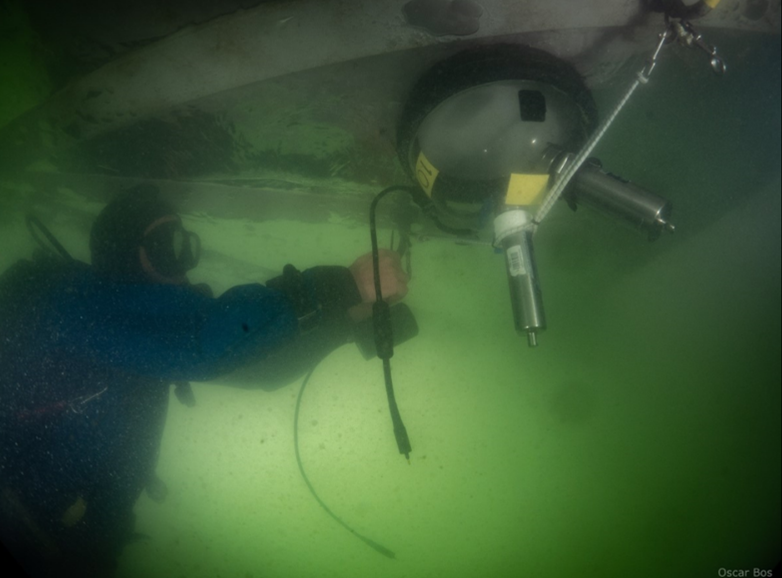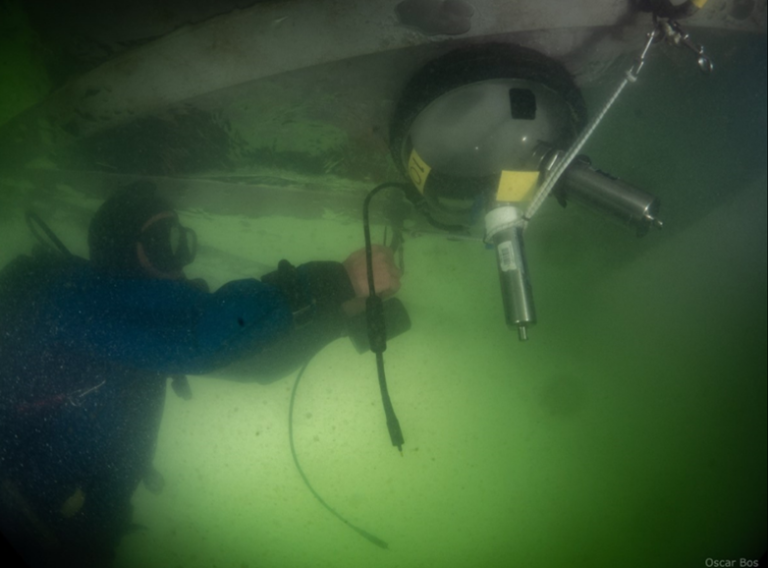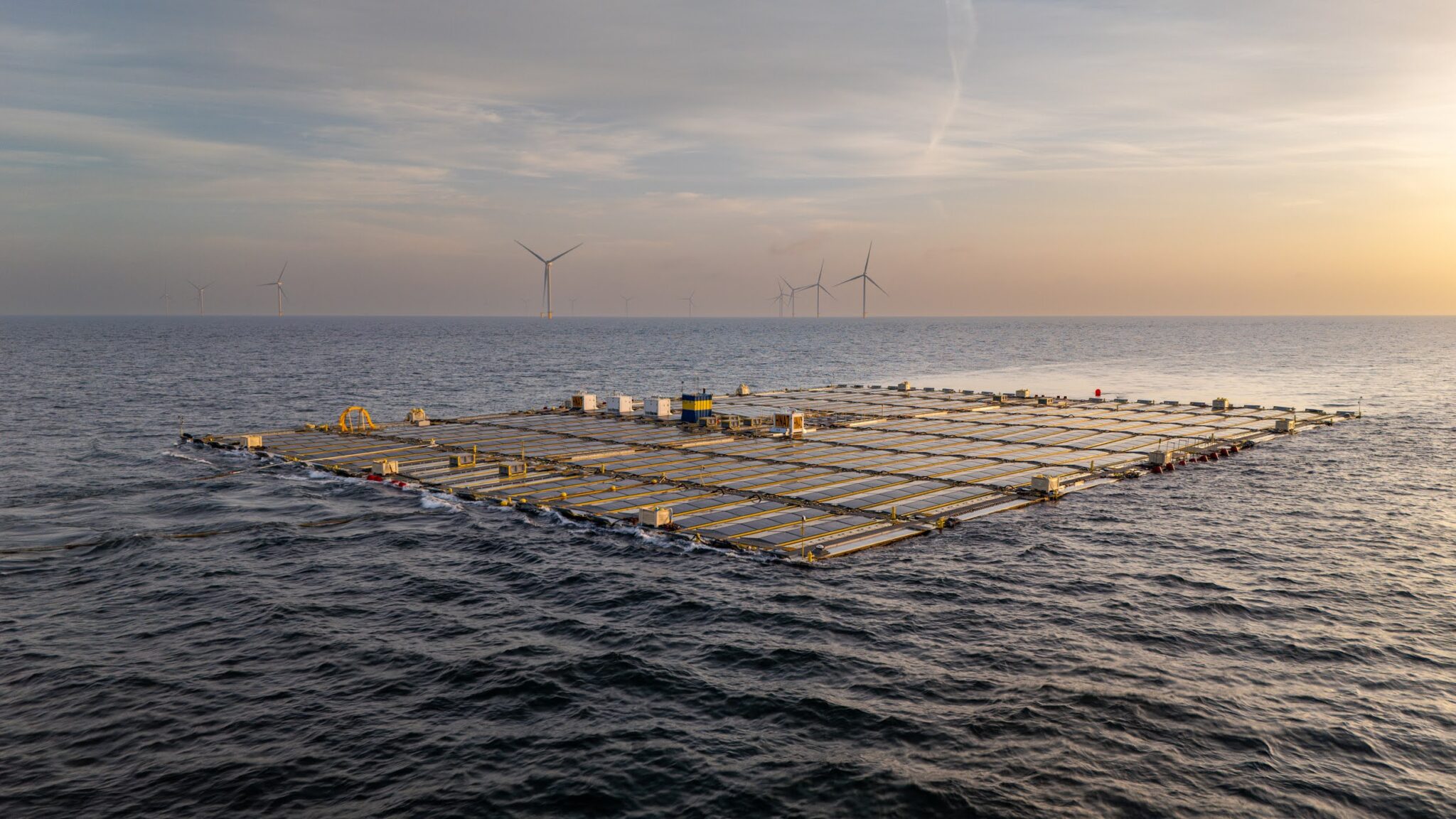
Hollandse Kust Noord offshore solar project (HKN1)
NYMPHEA AURORA
As part of the Hollandse Kust Noord (HKN) project by Crosswind – a joint venture between Shell and Eneco – Oceans of Energy is delivering the fabrication, full EPCI and Asset Management scopes of the world’s first large-scale offshore solar farm within an operational offshore wind park. With a water depth of 25m and 1500 solar panels, the system is engineerd to survive and thrive in harsh North Sea conditions. This is backed by over four years of proven offshore performance (from the NS1 and NS2 systems). The system is expected to be fully comissioned offshore in Q3 2025.
The project is the first and largest offshore solar farm in the world to be installed, connected, and operated within an offshore wind farm. With offshore solar added to offshore wind, it is possible to also produce energy on sunny but less windy days and hence increase the utilization of the infrastructure. The solar panels are placed in-between the offshore wind turbines, combining for efficient use of sea space. Crosswind’s Hollandse Kust Noord project is an innovative offshore wind park that uses cutting-edge technologies to improve the flexibility of offshore renewable energy systems.
NYMPHEA AURORA
Client: Crosswind (Shell & Eneco joint venture)
Location: Hollandse Kust Noord, the Netherlands, 22 kilometers
Distance from shore: 22 km offshore IJmuiden
Expected commissioning: 2025
Installed capacity: 0.5 MW
Surface area: 1 hectare
Water depth: 25m
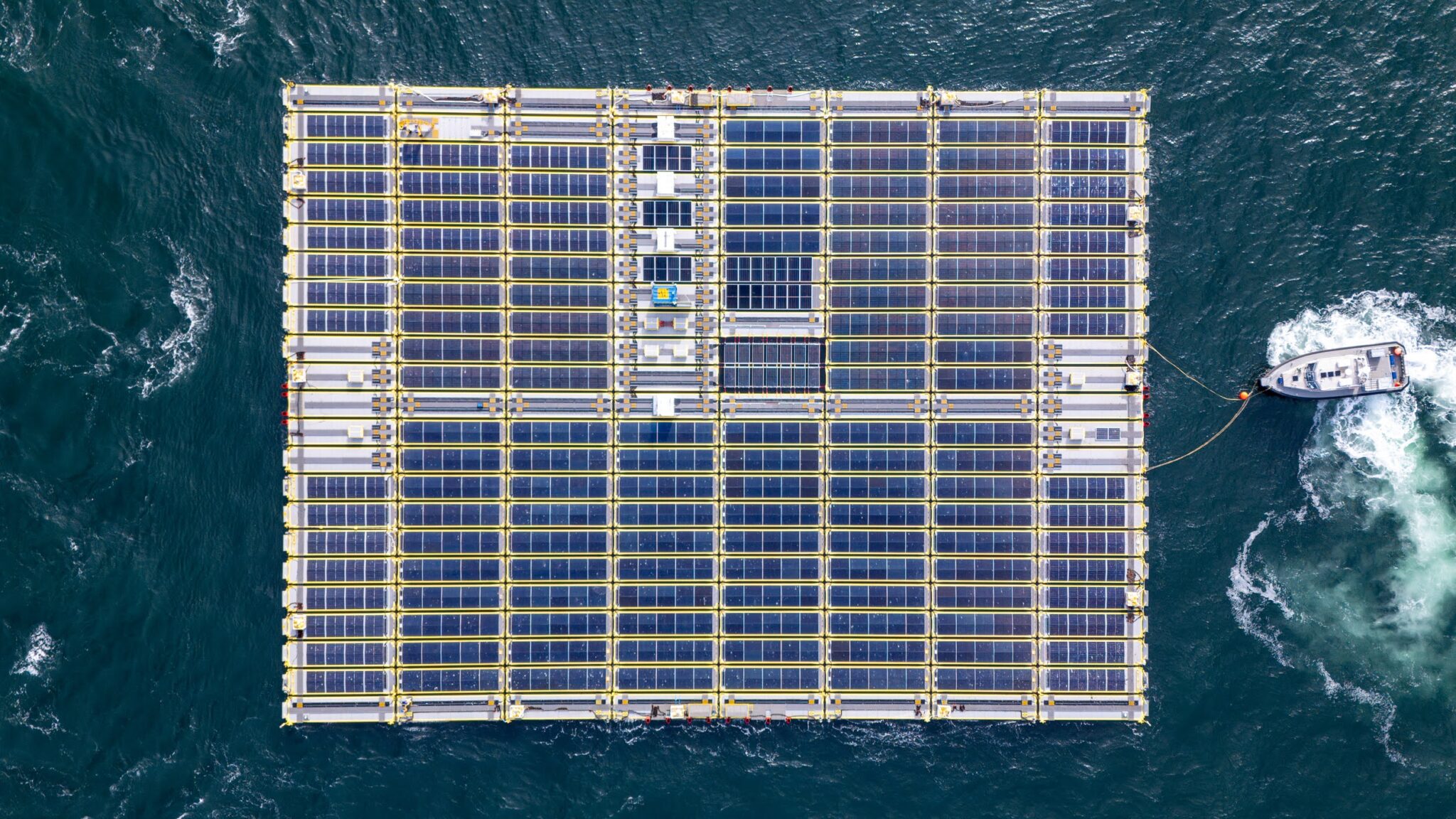
After contract award in 2023, the project started with an extensive technical review. The engineering- and project management teams of Oceans of Energy learned how to document and report towards the high standards that companies like Shell and Eneco demand.
Oceans of Energy moved to a new facility for the purpose to support large-scale energy projects. Procurement and fabrication for the HKN1 project commenced in 2024 and by the third quarter of that year, regular shipments of the floating farm components went underway to the Port of Amsterdam in preparation for the port deployment and offshore installation.
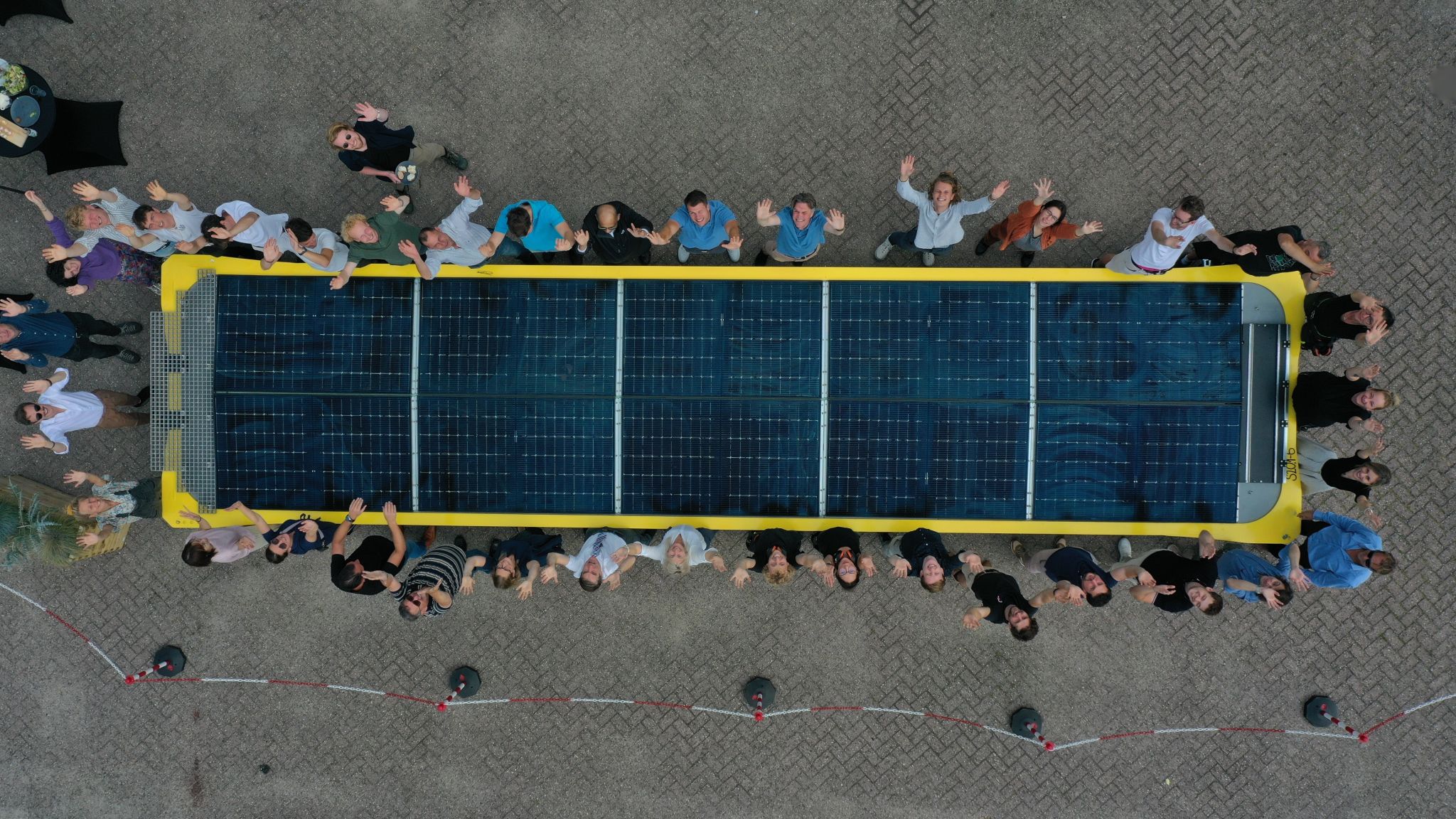
Covering a new area at sea with our state of the art energy system
The HKN1 offshore solar system brings together advanced marine engineering, lightweight modularity, and proven survivability in high wave environments. Designed for scalability and ease of deployment, the system floats effortlessly between the wind turbines of the Hollandse Kust Noord wind farm, creating a hybrid energy solution that makes smarter use of existing offshore infrastructure.
“Crosswind is excited to see this milestone reached through the collaborative efforts of NKT and Oceans of Energy. With the delivery of the dynamic subsea power export cable, we’re ready to connect for the first time in the world an offshore solar farm into the infrastructure of an offshore wind farm.” – Jeroen van Loon, Floating Solar Lead, Crosswind
A successfull permit application was achieved and contracting for the EPCI phase started. The dynamic subsea power export cable, which will connect the offshore solar farm to the nearest wind turbine foundation, was successfully tested and delivered. after which the cable was transported to site.
Inauguration & Christening (June 2025, Port of Amsterdam)
Nymphaea Aurora was inaugurated and christened in the Port of Amsterdam, marking readiness to move from port commissioning to offshore installation at Hollandse Kust Noord. Final port acceptance and pre-departure commissioning were completed successfully, with no faults detected—including in the electrical connectors. The farm was then cleared for tow-out via the Noordzeesluis (IJmuiden) to its position 18.5 km offshore within the wind farm.
Tow-out & Offshore Installation (August 2025)
Following final port acceptance, Nymphaea Aurora was towed from the Port of Amsterdam, passed the Noordzeesluis (IJmuiden), and reached its position 18.5 km offshore at Hollandse Kust Noord. Offshore works proceeded as planned and were completed safely.
What was installed offshore
-
Mooring / anchoring system: Hook-up and station-keeping verified.
-
Dynamic power export cable: Laid and connected to the nearest wind turbine monopile.
-
Mechanical scope: Tow-out, anchor handling, and cable operations executed as designed.
Operational at-sea performance highlights
- Mooring hook-up completed; station-keeping verified at site.
- Dynamic export cable: factory acceptance tested, delivered, and installed offshore.
- Wave-following behavior: floaters and modules move with the sea as designed.
- Weather events: The system has withstood named storms and strong winds (e.g., Storm Amy; wind force up to 9 Bft, Hmax ≈ 6.84 m) during the observation period.
-
Commissioning: July test operations functioned as intended prior to offshore installation.
Learnings
The operational period gave a wealth of learnings. These will be updated in this page.


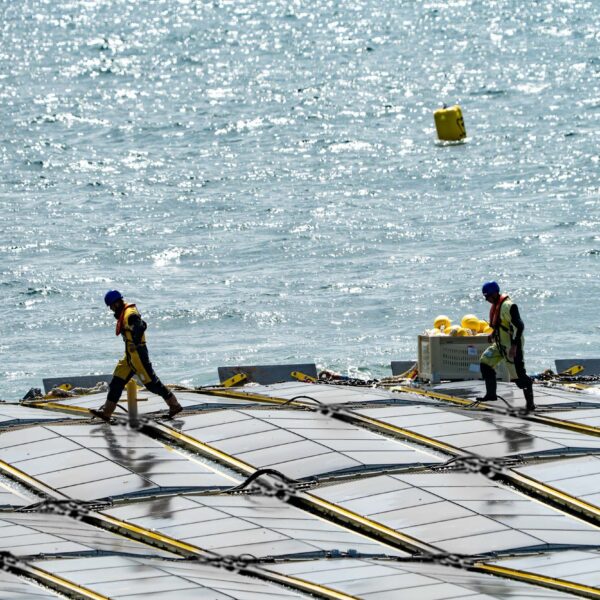
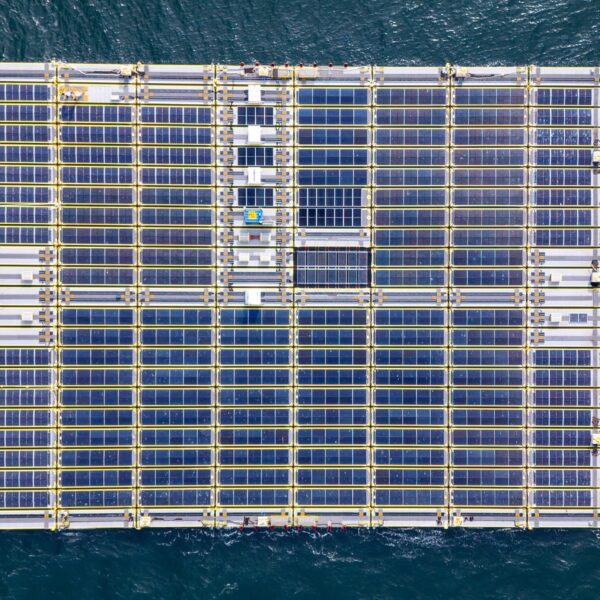


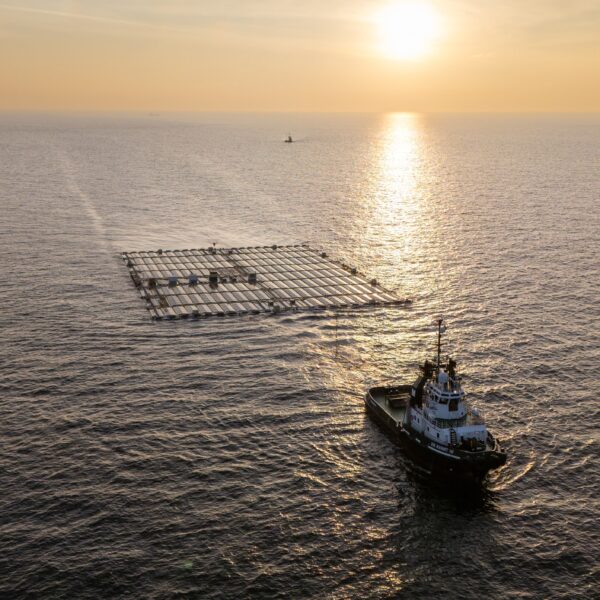
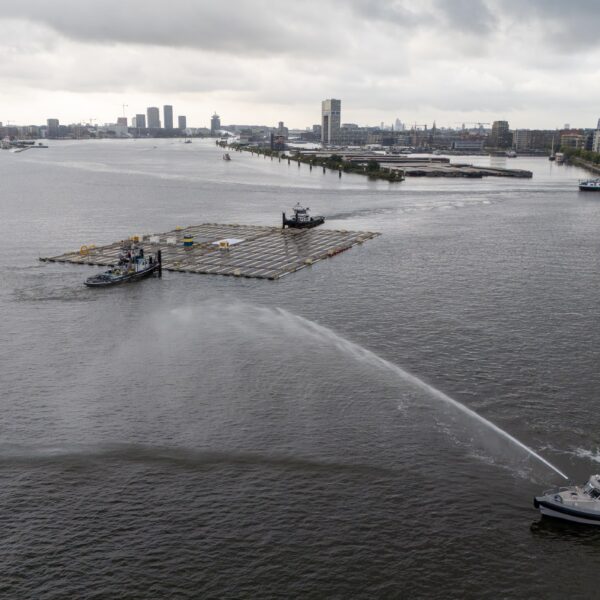
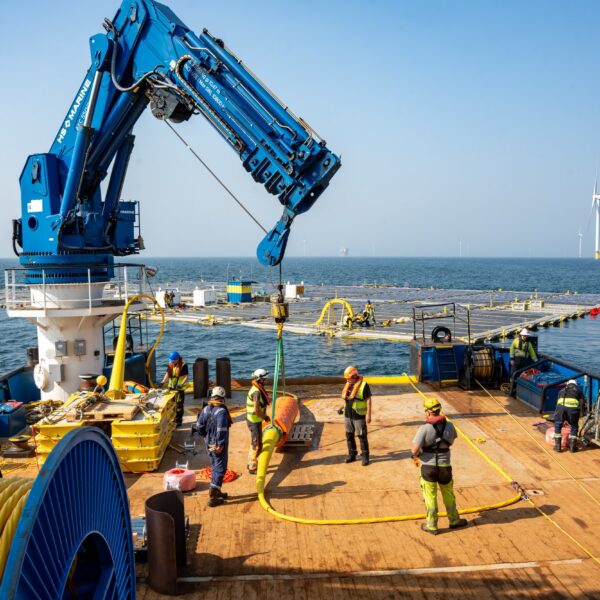
The development of Nymphaea Aurora has received funding from the European Union’s Horizon Europe research and innovation programme under the project BAMBOO, Grant Agreement number 101136142.Views and opinions expressed are however those of the author(s) only and do not necessarily reflect those of the European Union or the European Climate, Infrastructure and Environment Executive Agency (CINEA). Neither the European Union nor the granting authority can be held responsible for them.
![]()
![]()
Interested in working with us?
HKN1 is the first of many offshore solar projects we aim to realize. As we continue to scale this technology globally, we welcome new collaborations with partners, developers, and innovators in the offshore energy space.
If you are interested in learning more about our systems or exploring project opportunities, feel free to reach out.

